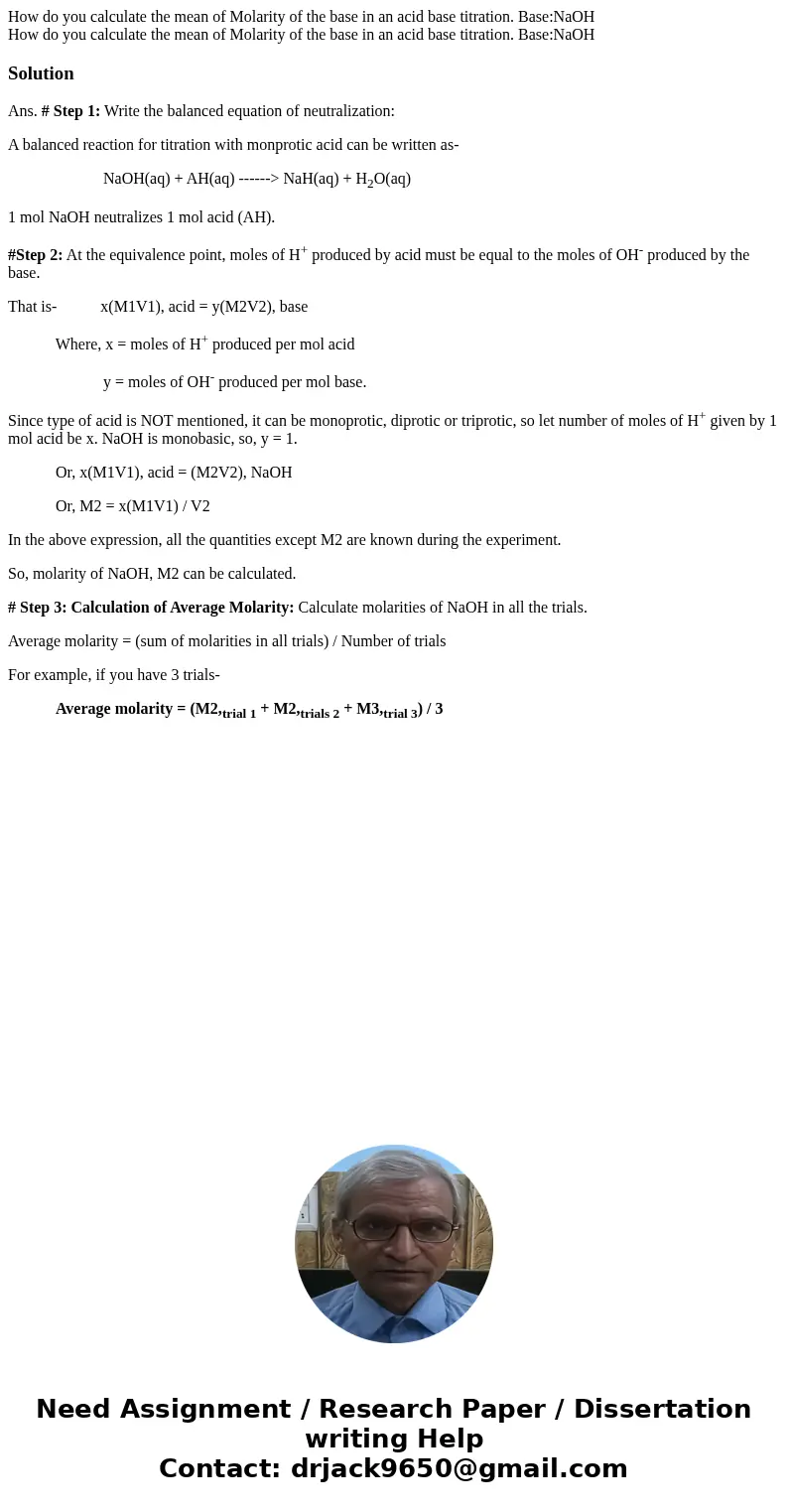How do you calculate the mean of Molarity of the base in an
Solution
Ans. # Step 1: Write the balanced equation of neutralization:
A balanced reaction for titration with monprotic acid can be written as-
NaOH(aq) + AH(aq) ------> NaH(aq) + H2O(aq)
1 mol NaOH neutralizes 1 mol acid (AH).
#Step 2: At the equivalence point, moles of H+ produced by acid must be equal to the moles of OH- produced by the base.
That is- x(M1V1), acid = y(M2V2), base
Where, x = moles of H+ produced per mol acid
y = moles of OH- produced per mol base.
Since type of acid is NOT mentioned, it can be monoprotic, diprotic or triprotic, so let number of moles of H+ given by 1 mol acid be x. NaOH is monobasic, so, y = 1.
Or, x(M1V1), acid = (M2V2), NaOH
Or, M2 = x(M1V1) / V2
In the above expression, all the quantities except M2 are known during the experiment.
So, molarity of NaOH, M2 can be calculated.
# Step 3: Calculation of Average Molarity: Calculate molarities of NaOH in all the trials.
Average molarity = (sum of molarities in all trials) / Number of trials
For example, if you have 3 trials-
Average molarity = (M2,trial 1 + M2,trials 2 + M3,trial 3) / 3

 Homework Sourse
Homework Sourse